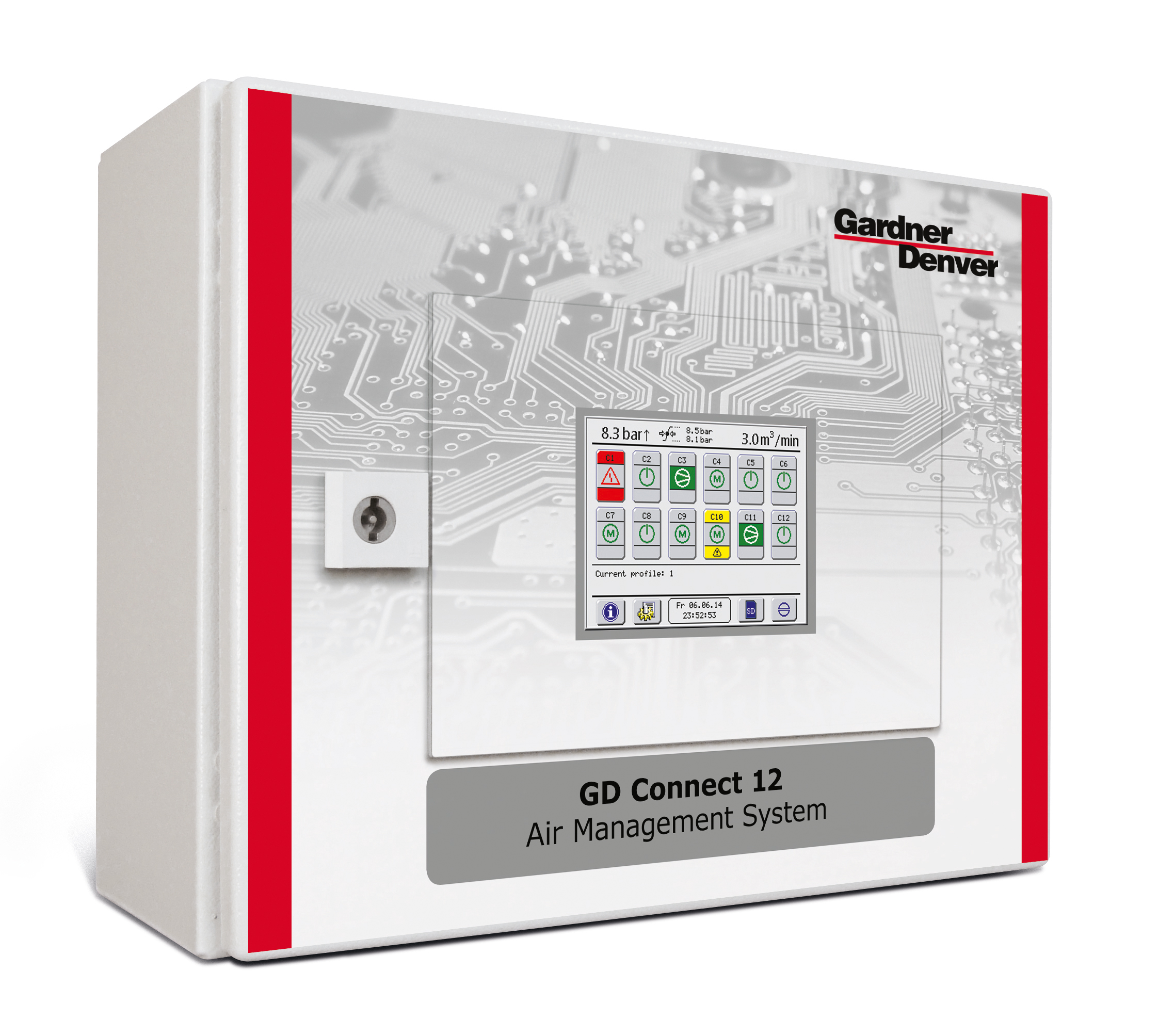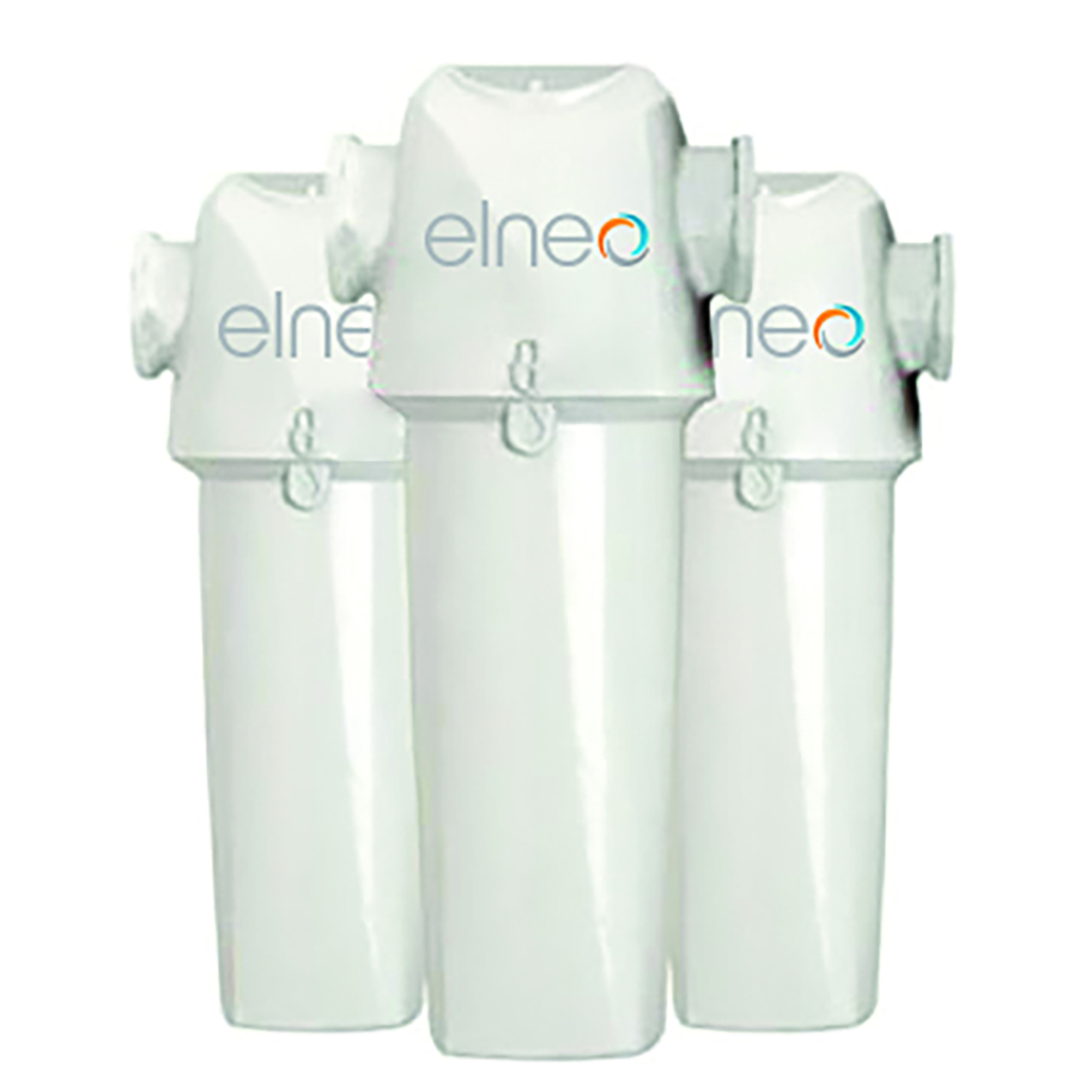
- In Belgium, compressed air consumes 10 to 15% of the energy produced for industry. That is the equivalent of more than 1 million Belgian households.
- Since the efficiency of a compressed air station is very low, the price of the pneumatic kWh is 10 times higher than the electric kWh.
- Over 5 years, energy consumption accounts for up to 85% of the costs of a compressed air system.
That is why Elneo wants to accompany you on the layout of your installation.
Elneo advises you on the different solutions according to your needs in order to help you to reduce your carbon footprint while making significant savings.
We are also at your disposal if you wish to have a training in energy saving.
On the diagram hereunder the different places where there is a potential for energy optimization:

Let's go over these points in detail:
1. Heat recovery
- Reduced CO2 emissions
- Factory-integrated system or retro-fit on existing installations
- Fast return on investment
The basic principle is to transfer the heat generated by the compressor and to use it for another application. The most common applications are the generation of hot water for heating buildings and/or sanitary facilities. Some compressor technologies can generate hot water up to 90°C.
Savings potential: 20 to 94%.

2. Variable speed compressors
A variable speed air compressor automatically adjusts its speed to the air demand. A fixed speed compressor operates either idle or on load (on/off).
Perfect for applications requiring a constant supply of compressed air... but this is not often the case. Compared to a fixed speed compressor, a variable speed compressor provides energy savings of 30% on average, and up to 50% in some cases.
Savings potential: 15 to 50%

3. Leak detection
At 7 bars, a tiny hole of 1/2 mm diameter results in a leak of 1m³/h and can cost you 250 to 500€/year.
You can take advantage of a period of inactivity to evaluate the importance of the leaks. An acceptable rate should be below 15%. It is then possible to locate these leaks in order to correct them.
This must be done at least once a year, as every day 2 to 3 leaks are created as the network ages.
Savings potential: 15 to 50%
Discover our leak detection service

4. GD Connect
The GD CONNECT 12 is an intelligent controller that can control up to 12 fixed or variable speed compressors. It reduces consumption by keeping the network pressure in the lowest possible optimal range. A connection to the local network is also possible, allowing remote monitoring of the compressor unit's operation and consumption.
Savings potential: 5 to 40%

5. Fresh air suction
A compressor is more efficient when the intake air is cold. Suctioning outside air lowers the temperature by an average of 10°C, reducing power consumption by 3.5%. Ideally, the suction should be outside, in the shade and on the north side.
Savings potential: 2 to 7%

6. Choose low pressure drop filters
After comparing the quality of our filters with those of the competition in an approved research center (IUTA), we found that our filters generate a pressure differential half as high as the competition. This is not negligible given that reducing the pressure by 1 bar at the compressor is equivalent to reducing the power consumption by 7%.
< 2% per filter

7. Elneo AirConnect: Remote monitoring of your compressors
Elneo's monitoring program offers you a complete view of your compressed air production. Not only does it monitor and confirm savings solutions, it also helps to predict potential problems and thus anticipate them. It also continuously monitors changes in production and informs you about future improvements.
Savings potential: 2 to 7%

Other good practices :
- Appoint a compressed air manager
- Raise staff awareness about compressed air (disseminate and display good practices)
- Limit the operating pressure. If a machine requires more, put a booster or a dedicated compressor.
- Shut down compressors during periods of inactivity to prevent leaks from consuming
- If possible, segment the air network and loop it.
- Avoid using compressed air to clean or cool the machines.
- Use capacitive drains
- Change the filter elements

